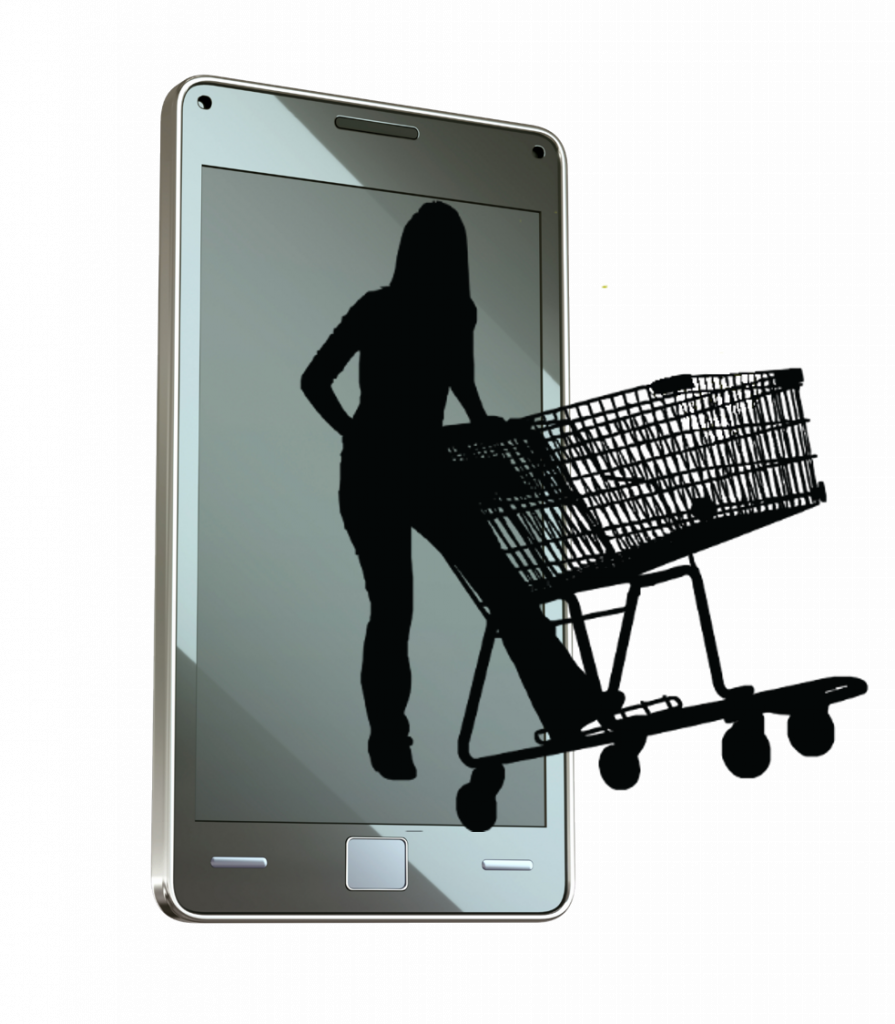Recently, a few grocery chains have declared bankruptcy or sold off store locations. Like other economic sectors, the grocery sector is not immune to changes in the Digital Age. A few years ago, Chris Morley (@ChrisMorley_), President of Nielsen’s largest market (i.e., packaged goods manufacturer and retail business), wrote, “Depending on what you read, we’re either at a tipping point, on the verge of a meltdown or facing the retail apocalypse. Regardless of your outlook, it’s undeniable that the global retail landscape is transforming faster than at any other point in modern history. And that transformation is making it harder to find growth, at least in categories that were used to seeing gains year over year.”[1] Morley went on to discuss some of the reasons the grocery sector is experiencing turmoil, including how consumers shop. He wrote, “As more Americans in smaller households with fewer people shift their spending to new channels like delivery services and meal kits, the average basket at the store has shrunk. … Also, as more food shoppers are buying ‘just in time’ food that’s prepared, convenient and closer to consumption, fewer shoppers are making trips to stock up their pantries. While this shift creates an opportunity for more experiential food offerings, retailers and brands need to work together to re-evaluate the productivity of the store and ultimately deliver an experience to consumers that will resonate.” In the years between when Morley wrote his article and now, grocery stores have made significant changes, including omnichannel strategies, improved shopping experiences, and fuller use of data. They are joining the Digital Age.
The changing consumer
Around the same time Morley was making his observations, Sarah Smith (@eat_the_future), research director for the Food Futures Lab at the Institute For The Future, was predicting consumer behavior would change rapidly in the future. At a Food Forward summit in Washington, D.C., she noted, “In 10 years, the term ‘consumer’ will be dead. Eaters are more than just consumers at the end of the supply chain. They have agency, they are co-creators, they take a more active role in what is being produced and how.”[2] She predicted consumers would become “makers” and view cooking as a meaningful and pleasurable pursuit. At that same event, Mike Lee, creator of The Future Market, agreed with Smith and predicted future consumers would desire “a more hands-on, intimate understanding of their food.” He believed grocery stores could take advantage of this trend by using new technology “to bring an experience to part of the grocery store where there wasn’t one.”
Today, almost every shopper brings their smartphone with them into the store. Grocers who can get consumers to use their smartphones while in the store may find it helps the bottom line. Carl-Philip Ahlbom, a researcher at the University of Bath, reports, “A recent study suggests that grocery shoppers who use their phones in the supermarket end up spending, on average, 41% more than those who don’t.”[3] He adds, “This may sound counterintuitive. Previously, many bricks-and-mortar retailers have regarded shoppers’ smartphones as a distraction — or worse. They worried that customers who paid attention to their phones spent less time looking at enticing product displays in the store, or might use their phones to search for better deals online. … It turned out that the effect is ultimately the opposite of what we might have thought. Shoppers who checked their phone while shopping spent on average 41% more at the till — and those people who used their phones the most also tended to spend the most money.”
According to Ahlbom, the reason in-store smartphone usage increases sales is because it breaks a consumers traditional pattern of shopping. He explains, “As attention is distracted, the way shoppers behave in the store drastically changes. They suddenly walk more slowly and in unpredictable patterns, wandering along the aisles. They find themselves spending more time in the store, and becoming more receptive to looking at a wider assortment of products as the autopilot has been interrupted. This means they are less likely to filter off information regarding products outside the normal script and more like to be inspired to buy more of them. In essence, shoppers who look at their phones spend more time in the store, look at more products and buy more things.”
Bringing digital inside the grocery store
Ahlbom’s revelation is supported by other evidence, especially as it relates to digital coupons people can download on their smartphones and use in stores. Russell Redman reports a 2018 survey by Valassis found, “Consumers are more likely to buy from grocery retailers that reward their loyalty with personalized offers or discounts (83%) and make them feel like a valued customer (67%).”[4] Of course, personalized offers can only be tendered if a retailer knows what consumers want — and that requires data. Curtis Tingle, Chief Marketing Officer for Valassis, stated, “Consumers have more options than ever before when it comes to how they purchase groceries. Whether they shop online, in-store, use a delivery or pickup service, or prepare meal kits at home, it’s critical for grocery retailers to consider shopper preferences. Consumers want deals, convenience and a personalized experience. Grocers who can deliver on these increasing customer demands will win them over and gain their loyalty.”
A follow-on survey by Valassis, indicated millennials are particularly attracted to digital coupons. Jessica Dumont (@JLDumont6) reports, a survey by Valassis, found, “When it comes to grocery shopping, parents are more likely to shop online, use digital coupons and choose specific stores for convenience. … About 58% of all parents, and 67% of millennial parents, load electronic coupons onto a loyalty or frequent shopper card versus 40% of all shoppers surveyed. Approximately 60% of parents and 68% of millennial parents look for coupons online compared with 38% of all shoppers.”[5] Randy Evins (@rrevins), senior principal for food, drug and convenience at SAP, observes, “The digital consumer has obliterated traditional retail in general, and food retailing specifically. It’s not just millennials, although they are at the forefront. This is coming from everywhere, and it isn’t going away. Digital shoppers and the information they generate have opened doors to an amazing transformation that can bring things into light that past grocers only dreamed about. Access to orders, customer profiles and buying habits, accurate predictive analysis, real time inventory visibility (even at the consumers’ pantry), and much more are now available in a digital world.”[6] Cognitive platforms, like the Enterra Cognitive Core™, are required to “bring things into light” for grocers. For example, the Enterra Cognitive Core powers the Enterra Shopper Marketing and Consumer Insights Intelligence System™, which can leverage all types of consumer data to provide high-dimensional consumer, retailer, and marketing insights.
Concluding thoughts
Cheryl Black writes, “From coupons to rebates to sweepstakes to instant wins, grocers are using a variety of digital offer types to gain loyalty from even the most steadfast customers by helping them save money and discover new favorite products. But right now, many grocers are only taking advantage of a small piece of what digital offers could bring to a business.”[7] She concludes, “For grocers, incorporating a digital offers program as a core part of their marketing strategy can help foster loyalty among new customers, entice shoppers from competitors and create a deeper relationship with tried and true favorites.” The valuable data collected from consumers taking advantage of digital offers can be analyzed by cognitive platforms to help retailers serve their customers better. Morley noted that millennials, more than previous generations, are open to digital exchanges with grocers. As a result, he concludes, “[Fast Moving Consumer Goods] manufacturers should reorient their brand and go-to-market strategies to address the unique characteristics of millennial demand.”
Footnotes
[1] Chris Morley, “What’s Happening In The U.S. Grocery Landscape?” Forbes, 3 May 2017.
[2] Emma Liem Beckett, “What will grocery shopping look like in the future?” Food Dive, 26 July 2017.
[3] Carl-Philip Ahlbom, “You spend 41% more at the supermarket if you keep checking your phone,” MarketWatch, 24 June 2019.
[4] Russell Redman, “Grocery shoppers swayed by coupons in stores and online,” Supermarket News, 20 September 2018.
[5] Jessica Dumont, “Parents embrace discounts, digital coupons and e-commerce,” Grocery Dive, 3 May 2019.
[6] Randy Evins, “7 key areas for digital transformation in grocery,” Food Dive, 31 August 2017.
[7] Cheryl Black, “How digital offers can foster loyalty and gain new customers,” Food Dive, 31 July 2017.





